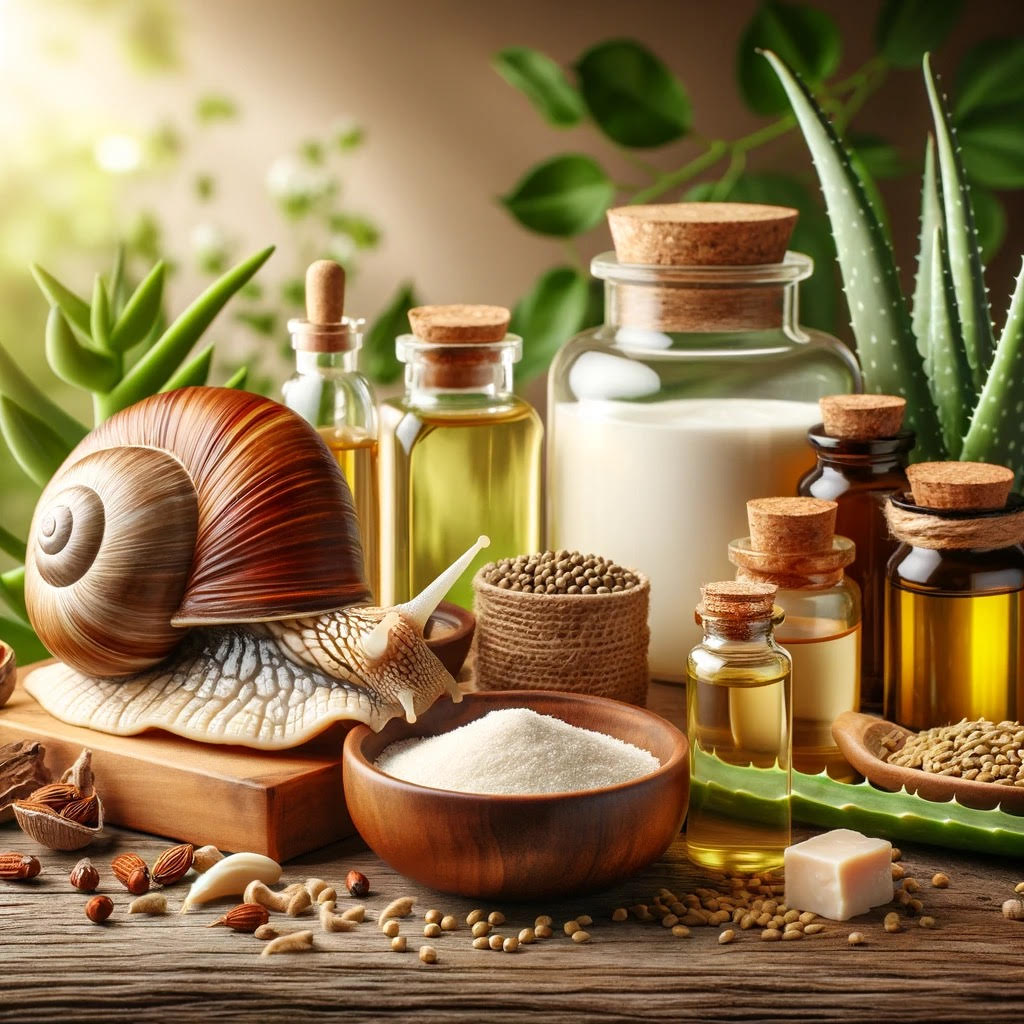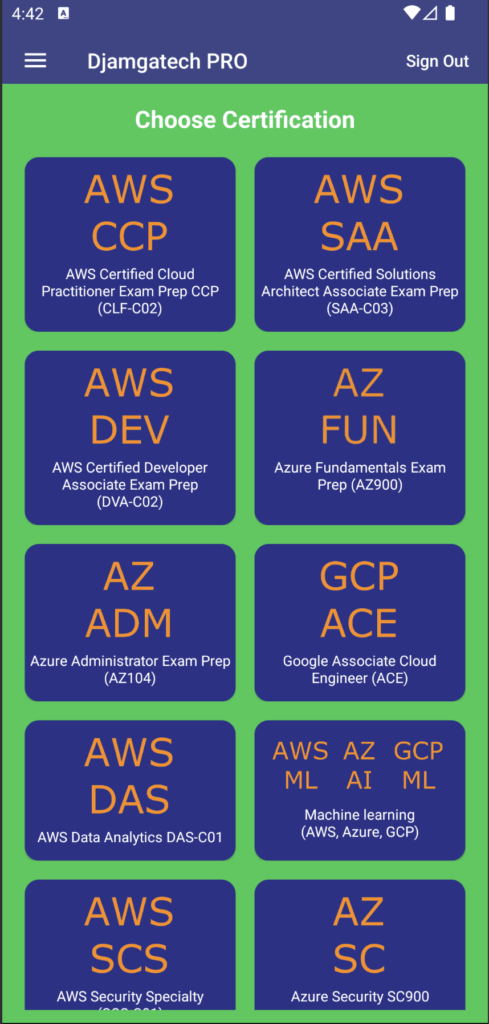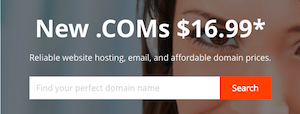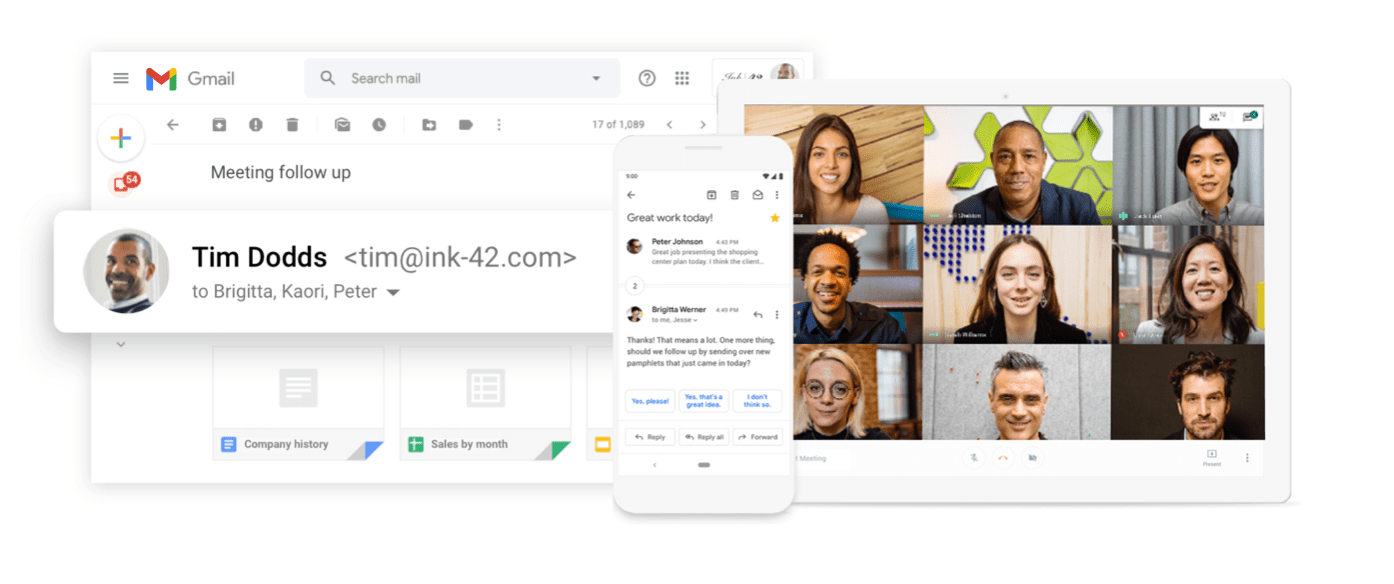What is the Best Machine Learning Algorithms for Imbalanced Datasets?
In machine learning, imbalanced datasets are those where one class heavily outnumbers the others. This can be due to the nature of the problem or simply because more data is available for one class than the others. Either way, imbalanced datasets can pose a challenge for machine learning algorithms. In this blog post, we’ll take a look at which machine learning algorithms are best suited for imbalanced datasets and why they tend to perform better than others.
For example, in a binary classification problem, if there are 100 observations, and only 10 of them are positive (the rest are negatives), then we say that the dataset is imbalanced. The ratio of positive to negative cases is 1:10.

There are a few reasons why some machine learning algorithms tend to perform better on imbalanced datasets than others. First, certain algorithms are designed to handle imbalanced datasets. Second, some algorithms are more robust to outliers, which can be more common in imbalanced datasets. And third, some algorithms are better able to learn from a limited amount of data, which can be an issue when one class is heavily outnumbered by the others.
Some of the best machine learning algorithms for imbalanced datasets include:
– Support Vector Machines (SVMs),
– Decision Trees,
– Random Forests,
– Naive Bayes Classifiers,
– k-Nearest Neighbors (kNN),
Of these, SVMs tend to be the most popular choice as they are specifically designed to handle imbalanced datasets. SVMs work by finding a hyperplane that maximizes the margin between the two classes. This helps to reduce overfitting and improve generalization. Decision trees and random forests are also popular choices as they are less sensitive to outliers than other algorithms such as linear regression. Naive Bayes classifiers are another good choice as they are able to learn from a limited amount of data. kNN is also a good choice as it is not sensitive to outliers and is able to learn from a limited amount of data. However, it can be computationally intensive for large datasets.
There are two main types of machine learning algorithms: supervised and unsupervised. Supervised algorithms tend to perform better on imbalanced datasets than unsupervised algorithms. In this blog post, we will discuss why this is so and look at some examples.
Supervised Algorithms
Supervised algorithms are those where the target variable is known. In other words, we have training data where the correct answers are already given. The algorithm then learns from this data and is able to generalize to new data. Some examples of supervised algorithms are regression and classification.
Unsupervised Algorithms
Unsupervised algorithms are those where the target variable is not known. With unsupervised algorithms, we only have input data, without any corresponding output labels. The algorithm has to learn from the data itself without any guidance. Some examples of unsupervised algorithms are clustering and dimensionality reduction.
Why Supervised Algorithms Perform Better on Imbalanced Datasets
The reason why supervised algorithms perform better on imbalanced datasets is because they can learn from the training data which cases are more important. With unsupervised algorithms, all data points are treated equally, regardless of whether they are in the minority or majority class.
For example, in a binary classification problem with an imbalanced dataset, let’s say that we want to predict whether a customer will default on their loan payment or not. We have a training dataset of 1000 customers, out of which only 100 (10%) have defaulted on their loan in the past.
If we use a supervised algorithm like logistic regression, the algorithm will learn from the training data that defaulting on a loan is rare (since only 10% of cases in the training data are Positive). This means that it will be more likely to predict correctly that a new customer will not default on their loan (since this is the majority class in the training data).
However, if we use an unsupervised algorithm like k-means clustering, all data points will be treated equally since there is no target variable to guide the algorithm. This means that it might incorrectly cluster together customers who have defaulted on their loans with those who haven’t since there is no guidance provided by a target variable.
Conclusion:
In conclusion, supervised machine learning algorithms tend to perform better on imbalanced datasets than unsupervised machine learning algorithms because they can learn from the training data which cases are more important.
Some machine learning algorithms tend to perform better on highly imbalanced datasets because they are designed to deal with imbalance or because they can learn from both classes simultaneously. If you are working with a highly imbalanced dataset, then you should consider using one of these algorithms.
Thanks for reading!
How are machine learning techniques being used to address unstructured data challenges?
Machine learning techniques are being used to address unstructured data challenges in a number of ways:
- Natural language processing (NLP): NLP algorithms can be used to extract meaningful information from unstructured text data, such as emails, documents, and social media posts. NLP algorithms can be trained to classify text data, identify key terms and concepts, and extract structured data from unstructured text.
- Image recognition: Machine learning algorithms can be used to analyze and classify images, enabling the automatic identification and classification of objects, people, and other elements in images. This can be useful for tasks such as image tagging and search, as well as for applications such as security and surveillance.
- Audio and speech recognition: Machine learning algorithms can be used to analyze and classify audio data, enabling the automatic transcription and translation of spoken language. This can be useful for tasks such as speech-to-text transcription, as well as for applications such as call center automation and language translation.
- Video analysis: Machine learning algorithms can be used to analyze and classify video data, enabling the automatic detection and classification of objects, people, and other elements in video. This can be useful for tasks such as video tagging and search, as well as for applications such as security and surveillance.
Overall, machine learning techniques are being used in a wide range of applications to extract meaningful information from unstructured data, and to enable the automatic classification and analysis of data in a variety of formats.
How is AI and machine learning impacting application development today?
Artificial intelligence (AI) and machine learning are having a significant impact on application development today in a number of ways:
- Enabling new capabilities: AI and machine learning algorithms can be used to enable applications to perform tasks that would be difficult or impossible for humans to do. For example, AI-powered applications can be used to analyze and classify large amounts of data, or to automate complex decision-making processes.
- Improving performance: AI and machine learning algorithms can be used to optimize the performance of applications, making them faster, more efficient, and more accurate. For example, machine learning algorithms can be used to improve the accuracy of predictive models, or to optimize the performance of search algorithms.
- Streamlining development: AI and machine learning algorithms can be used to automate various aspects of application development, such as testing, debugging, and deployment. This can help to streamline the development process and reduce the time and resources needed to build and maintain applications.
- Enhancing user experiences: AI and machine learning algorithms can be used to enhance the user experience of applications, by providing personalized recommendations, recommendations, or by enabling applications to anticipate and respond to the needs and preferences of users.
Overall, AI and machine learning are having a significant impact on application development today, and they are likely to continue to shape the way applications are built and used in the future.
How will advancements in artificial intelligence and machine learning shape the future of work and society?
Advancements in artificial intelligence (AI) and machine learning are likely to shape the future of work and society in a number of ways. Some potential impacts include:
- Automation: AI and machine learning algorithms can be used to automate tasks that are currently performed by humans, such as data entry, customer service, and manufacturing. This could lead to changes in the types of jobs that are available and the skills that are in demand, as well as to increased productivity and efficiency.
- Job displacement: While automation may create new job opportunities, it could also lead to job displacement, particularly for workers in industries that are more susceptible to automation. This could lead to social and economic challenges, including unemployment and income inequality.
- Increased efficiency: AI and machine learning algorithms can be used to optimize and streamline business processes, leading to increased efficiency and productivity. This could lead to economic growth and innovation, and could also help to reduce costs for businesses and consumers.
- Enhanced decision-making: AI and machine learning algorithms can be used to analyze large amounts of data and make more informed and accurate decisions. This could lead to improved outcomes in fields such as healthcare, finance, and education, and could also help to reduce bias and improve fairness.
Overall, the impact of AI and machine learning on the future of work and society is likely to be significant and complex, with both potential benefits and challenges. It will be important to consider and address these impacts as these technologies continue to advance and become more widely adopted.
- [D] Every annotator has a guidebook, but the reviewers don'tby /u/Spico197 (Machine Learning) on July 26, 2024 at 1:20 pm
I submitted to the ACL rolling review in June and found the reviewers' evaluation scores very subjective. Although the ACL committee has an instruction on some basic reviewing guidelines, there lacks of a preliminary test for the reviewers to explicitly show the evaluation standards. Maybe we should provide some paper-score examples to prompt the reviewers for more objective reviews? Or build a test before they make reviews to make sure they fully understand the meaning of soundness and overall assessment, rather than giving some random scores based on their personal interests. submitted by /u/Spico197 [link] [comments]
- [D] How OpenAI JSON mode implemented?by /u/Financial_Air5256 (Machine Learning) on July 26, 2024 at 11:15 am
I assume that all the training data is in JSON format, but higher temperature or other randomness during generation doesn’t guarantee that the outputs will always be in JSON. What other methods do you think could ensure that the outputs are consistently in JSON? Perhaps some rule-based methods during decoding could help? submitted by /u/Financial_Air5256 [link] [comments]
- [D] Do only some hardware support int4 quantization? If so why?by /u/Abs0lute_Jeer0 (Machine Learning) on July 26, 2024 at 7:56 am
I tried quantizing my finetuned mT5 model using the optimum’s openvino wrapper to int8 and int4. There was very little difference in the inference time, close to 5%. This makes me wonder if it’s an issue with hardware. I’m using intel sapphire rapids and it has an avx512_vnni instruction set. How did I figure out if it supports int4? And why and why not? submitted by /u/Abs0lute_Jeer0 [link] [comments]
- [D] Normalization in transformersby /u/lostn4d (Machine Learning) on July 26, 2024 at 7:44 am
After the first theoretical issue with my transformer, I now see another. The original paper uses normalization after residual addition (Post-LN), which led to training difficulties and later got replaced by normalization at the beginning of each attention or mlp block/branch (Pre-LN). This is known to work better in practice (trainable without warmup, restores highway effect), but it still doesn't seem completely ok theoretically. First consider things without normalization. Assuming attention and mlp blocks are properly set up and mostly keep norms, each residual addition would sum two similar norm signals, potentially scaling up by something like 1.4 (depending on correlation, but it starts at sqrt(2) after random init). So the norms after the blocks could look like this: [1(main)+1(residual)=1.4] -> [1.4+1.4=2] -> [2+2=2.8] etc. This would cause various problems (like changing the softmax temp in later attention blocks), so adjustment is needed. Pre-LN ensures each block works on normalized values (thus with constant - if slightly arbitrary - softmax temperature). But since it doesn't affect the norm of the main signal (as forwarded by the skip connection) but only the residual, the norms can still grow, albeit slower. The expectation is now roughly: [1+1=1.4] -> [1.4+1=1.7] -> [1.7+1=2] -> [2+1=2.2] etc - with a final normalization correcting the signal near output (Pre-LN paper). One possible issue with this is that later attention blocks may have reduced effect, as they add unit norm residuals to a potentially larger and larger main signal. What is the usual take on this problem? Can it be ignored in practice? Does Pre-LN work acceptably despite it, even for deep models (where the main norm discrepancy can grow larger)? There are lots of alternative normalization papers, but what is the practical consensus? Btw attention is extremely norm-sensitive (or, equivalently, the hidden temperature of softmax is critical). This is a sharp contrast to fc or convolution which are mostly scale-oblivious. For anybody interested: consider what happens when most raw attention dot products come out 0 (= query and key is orthogonal, no info from this context slot) with only one slot giving 1 (= positive affinity, after downscaled by sqrt(qk_siz) ). I for one got surprised by this during debug. submitted by /u/lostn4d [link] [comments]
- [R] How do you search for implementations of Mixture of Expert models that can be trained locally in a laptop or desktop without ultra-high end GPUs?by /u/Furiousguy79 (Machine Learning) on July 25, 2024 at 11:12 pm
Hi, I am a 2nd year PhD student in CS. My supervisor just got this idea about MoEs and fairness and asked me to implement it ( work on a toy classification problem on tabular data and NOT language data). However as it is not their area of expertise, they did not give any guidelines on how to approach it. My main question is: How do I search for or proceed with implementing a mixture of expert models? The ones that I find are for chatting and such but I mainly work with tabular EHR data. This is my first foray into this area (LLMs and MoEs) and I am kind of lost with all these Mixtral, openMoE, etc. As we do not have access to Google Collab or have powerful GPUs I have to rely on local training (My lab PC has 2080ti and my laptop has 4070). Any guideline or starting point on how to proceed would be greatly appreciated. submitted by /u/Furiousguy79 [link] [comments]
- [P] How to make "Out-of-sample" Predictionsby /u/Individual_Ad_1214 (Machine Learning) on July 25, 2024 at 7:47 pm
My data is a bit complicated to describe so I'm going try to describe something analogous. Each example is randomly generated, but you can group them based on a specific but latent (by latent I mean this isn't added into the features used to develop a model, but I have access to it) feature (in this example we'll call this number of bedrooms). Feature x1 Feature x2 Feature x3 ... Output (Rent) Row 1 Row 2 Row 3 Row 4 Row 5 Row 6 Row 7 2 Row 8 1 Row 9 0 So I can group Row 1, Row 2, and Row 3 based on a latent feature called number of bedrooms (which in this case is 0 bedroom). Similarly, Row 4, Row 5, & Row 6 have 2 Bedrooms, and Row 7, Row 8, & Row 9 have 4 Bedrooms. Furthermore, these groups also have an optimum price which is used to create output classes (output here is Rent; increase, keep constant, or decrease). So say the optimum price for the 4 bedrooms group is $3mil, and row 7 has a price of $4mil (=> 3 - 4 = -1 mil, i.e a -ve value so convert this to class 2, or above optimum or increase rent), row 8 has a price of $3mil (=> 3 - 3 = 0, convert this to class 1, or at optimum), and row 9 has a price of $2mil (3 - 2 = 1, i.e +ve value, so convert this to class 0, or below optimum, or decrease rent). I use this method to create an output class for each example in the dataset (essentially, if example x has y number of bedrooms, I get the known optimum price for that number of bedrooms and I subtract the example's price from the optimum price). Say I have 10 features (e.g. square footage, number of bathrooms, parking spaces etc.) in the dataset, these 10 features provide the model with enough information to figure out the "number of bedrooms". So when I am evaluating the model, feature x1 feature x2 feature x3 ... Row 10 e.g. I pass into the model a test example (Row 10) which I know has 4 bedrooms and is priced at $6mil, the model can accurately predict class 2 (i.e increase rent) for this example. Because the model was developed using data with a representative number of bedrooms in my dataset. Features.... Output (Rent) Row 1 0 Row 2 0 Row 3 0 However, my problem arises at examples with a low number of bedrooms (i.e. 0 bedrooms). The input features doesn't have enough information to determine the number of bedrooms for examples with a low number of bedrooms (which is fine because we assume that within this group, we will always decrease the rent, so we set the optimum price to say $2000. So row 1 price could be $8000, (8000 - 2000 = 6000, +ve value thus convert to class 0 or below optimum/decrease rent). And within this group we rely on the class balance to help the model learn to make predictions because the proportion is heavily skewed towards class 0 (say 95% = class 0 or decrease rent, and 5 % = class 1 or class 2). We do this based the domain knowledge of the data (so in this case, we would always decrease the rent because no one wants to live in a house with 0 bedrooms). MAIN QUESTION: We now want to predict (or undertake inference) for examples with number of bedrooms in between 0 bedrooms and 2 bedrooms (e.g 1 bedroom NOTE: our training data has no example with 1 bedroom). What I notice is that the model's predictions on examples with 1 bedroom act as if these examples had 0 bedrooms and it mostly predicts class 0. My question is, apart from specifically including examples with 1 bedroom in my input data, is there any other way (more statistics or ML related way) for me to improve the ability of my model to generalise on unseen data? submitted by /u/Individual_Ad_1214 [link] [comments]
- [R] EMNLP Paper review scoresby /u/Immediate-Hour-8466 (Machine Learning) on July 25, 2024 at 7:06 pm
EMNLP paper review scores Overall assessment for my paper is 2, 2.5 and 3. Is there any chance that it may still be selected? The confidence is 2, 2.5 and 3. The soundness is 2, 2.5, 3.5. I am not sure how soundness and confidence may affect my paper's selection. Pls explain how this works. Which metrics should I consider important. Thank you! submitted by /u/Immediate-Hour-8466 [link] [comments]
- [N] OpenAI announces SearchGPTby /u/we_are_mammals (Machine Learning) on July 25, 2024 at 6:41 pm
https://openai.com/index/searchgpt-prototype/ We’re testing SearchGPT, a temporary prototype of new AI search features that give you fast and timely answers with clear and relevant sources. submitted by /u/we_are_mammals [link] [comments]
- [P] Local Llama 3.1 and Marqo Retrieval Augmented Generationby /u/elliesleight (Machine Learning) on July 25, 2024 at 4:45 pm
I built a simple starter demo of a Knowledge Question and Answering System using Llama 3.1 (8B GGUF) and Marqo. Feel free to experiment and build on top of this yourselves! GitHub: https://github.com/ellie-sleightholm/marqo-llama3_1 submitted by /u/elliesleight [link] [comments]
- [N] AI achieves silver-medal standard solving International Mathematical Olympiad problemsby /u/we_are_mammals (Machine Learning) on July 25, 2024 at 4:16 pm
https://deepmind.google/discover/blog/ai-solves-imo-problems-at-silver-medal-level/ They solved 4 of the 6 IMO problems (although it took days to solve some of them). This would have gotten them a score of 28/42, just one point below the gold-medal level. submitted by /u/we_are_mammals [link] [comments]
- [R] Explainability of HuggingFace Models (LLMs) for Text Summarization/Generation Tasksby /u/PhoenixHeadshot25 (Machine Learning) on July 25, 2024 at 3:19 pm
Hi community, I am exploring the Responsible AI domain where I have started reading about methods and tools to make Deep Learning Models explainable. I have already used SHAP and LIMe for ML model explainability. However, I am unsure about their use in explaining LLMs. I know that these methods are model agnostic but can we use these methods for Text Generation or Summarization tasks? I got reference docs from Shap explaining GPT2 for text generation tasks, but I am unsure about using it for other newer LLMs. Additionally, I would like to know, are there any better ways for Explainable AI for LLMs? submitted by /u/PhoenixHeadshot25 [link] [comments]
- [D] High-Dimensional Probabilistic Modelsby /u/smorad (Machine Learning) on July 25, 2024 at 2:58 pm
What is the standard way to model high-dimensional stochastic processes today? I have some process defined over images x, and I would like to compute P(x' | x, z) for all x'. I know there are Normalizing Flows, Gaussian Processes, etc, but I do not know which to get started with. I specifically want to compute the probabilities, not just sample some x' ~ P(x, z). submitted by /u/smorad [link] [comments]
- [R] Shared Imagination: LLMs Hallucinate Alikeby /u/zyl1024 (Machine Learning) on July 25, 2024 at 1:49 pm
Happy to share our recent paper, where we demonstrate that LLMs exhibit surprising agreement on purely imaginary and hallucinated contents -- what we call a "shared imagination space". To arrive at this conclusion, we ask LLMs to generate questions on hypothetical contents (e.g., a made-up concept in physics) and then find that they can answer each other's (unanswerable and nonsensical) questions with much higher accuracy than random chance. From this, we investigate in multiple directions on its emergence, generality and possible reasons, and given such consistent hallucination and imagination behavior across modern LLMs, discuss implications to hallucination detection and computational creativity. Link to the paper: https://arxiv.org/abs/2407.16604 Link to the tweet with result summary and highlight: https://x.com/YilunZhou/status/1816371178501476473 Please feel free to ask any questions! The main experiment setup and finding. submitted by /u/zyl1024 [link] [comments]
- [R] Paper NAACL 2024: "Reliability Estimation of News Media Sources: Birds of a Feather Flock Together"by /u/sergbur (Machine Learning) on July 25, 2024 at 9:10 am
For people working on information verification in general, for instance, working on fact checking, fake news detection or even using RAG from news articles this paper may be useful. Authors use different reinforcement learning techniques to estimate reliability values of news media outlets based on how they interact on the web. The method is easy to scale since the source code is available to build larger hyperlink-based interaction graphs from Common Crawl News. Authors also released the computed values and dataset with news media reliability annotation: Github repo: https://github.com/idiap/News-Media-Reliability Paper: https://aclanthology.org/2024.naacl-long.383/ Live Demo Example: https://lab.idiap.ch/criteria/ In the demo, the retrieved news articles will be order not only by the match to the query but also by the estimated reliability for each sources (URL domains are color coded from green to red, for instance, scrolling down will show results coming from less reliable sources marked with red-ish colors). Alternatively, if a news URL or a news outlet domain (e.g. apnews.com) is given as a query, information about the estimated values are detailed (e.g. showing the neighboring sources interacting with the media, etc.) Have a nice day, everyone! 🙂 submitted by /u/sergbur [link] [comments]
- [D] ACL ARR June (EMNLP) Review Discussionby /u/always_been_a_toy (Machine Learning) on July 25, 2024 at 4:45 am
Too anxious about reviews as they didn’t arrive yet! Wanted to share with the community and see the reactions to the reviews! Rant and stuff! Be polite in comments. submitted by /u/always_been_a_toy [link] [comments]
- "[Discussion]" Where do you get your updates on latest research in video generation and computer vision?by /u/Sobieski526 (Machine Learning) on July 24, 2024 at 9:20 pm
As the title says, looking for some tips on how you keep track of the latest research in video generation and CV. I have been reading through https://cvpr.thecvf.com/ and it's a great source, are there any simiar ones? submitted by /u/Sobieski526 [link] [comments]
- [R] Pre-prompting your LLM increases performanceby /u/CalendarVarious3992 (Machine Learning) on July 24, 2024 at 8:33 pm
Research done at UoW shows that pre-prompting your LLM, or providing context prior to asking your question leads to better results. Even when the context is self generated. https://arxiv.org/pdf/2110.08387 For example asking, "What should I do while in Rome?" is less effective than a series of prompts, "What are the top restaraunts in Rome?" "What are the top sight seeing locations in Rome?" "Best things to do in Rome" "What should I do in Rome?" I always figured this was the case from anecdotal evidence but good to see people who are way starter than me explain it in this paper. And while chain prompting is a little more time consuming there's chrome extensions like ChatGPT Queue that ease up the process. Are their any other "hacks" to squeeze out better performance ? submitted by /u/CalendarVarious3992 [link] [comments]
- [R] Segment Anything Repository Archived - Why?by /u/Ben-L-921 (Machine Learning) on July 24, 2024 at 8:23 pm
Hello ML subreddit, I was recently made aware of the fact that the segment anything repository got made into a public archive less than a month ago (July 1st, 2024). I was not able to find any information pertaining to why this was the case, however. I know there have been a lot of derivatives of segment anything in development, but I don't know why this would have warranted a public archive. Does anyone know why this happened and where we might be able to redirect questions/issues for the work? submitted by /u/Ben-L-921 [link] [comments]
- [N] Mistral releases a "Large Enough" modelby /u/we_are_mammals (Machine Learning) on July 24, 2024 at 7:04 pm
https://mistral.ai/news/mistral-large-2407/ 123B parameters On par with GPT-4o and Llama 3.1 405B, according to their benchmarks Mistral Research License allows usage and modification for research and non-commercial purposes submitted by /u/we_are_mammals [link] [comments]
- [P] NCCLX mentioned in llama3 paperby /u/khidot (Machine Learning) on July 24, 2024 at 3:54 pm
The paper says `Our collective communication library for Llama 3 is based on a fork of Nvidia’s NCCL library, called NCCLX. NCCLX significantly improves the performance of NCCL, especially for higher latency networks`. Can anyone give more background? Any plans to release or upstream? Any more technical details? submitted by /u/khidot [link] [comments]
Active Hydrating Toner, Anti-Aging Replenishing Advanced Face Moisturizer, with Vitamins A, C, E & Natural Botanicals to Promote Skin Balance & Collagen Production, 6.7 Fl Oz


Age Defying 0.3% Retinol Serum, Anti-Aging Dark Spot Remover for Face, Fine Lines & Wrinkle Pore Minimizer, with Vitamin E & Natural Botanicals


Firming Moisturizer, Advanced Hydrating Facial Replenishing Cream, with Hyaluronic Acid, Resveratrol & Natural Botanicals to Restore Skin's Strength, Radiance, and Resilience, 1.75 Oz

Skin Stem Cell Serum


Smartphone 101 - Pick a smartphone for me - android or iOS - Apple iPhone or Samsung Galaxy or Huawei or Xaomi or Google Pixel
Can AI Really Predict Lottery Results? We Asked an Expert.

Djamgatech

Read Photos and PDFs Aloud for me iOS
Read Photos and PDFs Aloud for me android
Read Photos and PDFs Aloud For me Windows 10/11
Read Photos and PDFs Aloud For Amazon
Get 20% off Google Workspace (Google Meet) Business Plan (AMERICAS): M9HNXHX3WC9H7YE (Email us for more)
Get 20% off Google Google Workspace (Google Meet) Standard Plan with the following codes: 96DRHDRA9J7GTN6(Email us for more)
FREE 10000+ Quiz Trivia and and Brain Teasers for All Topics including Cloud Computing, General Knowledge, History, Television, Music, Art, Science, Movies, Films, US History, Soccer Football, World Cup, Data Science, Machine Learning, Geography, etc....

List of Freely available programming books - What is the single most influential book every Programmers should read
- Bjarne Stroustrup - The C++ Programming Language
- Brian W. Kernighan, Rob Pike - The Practice of Programming
- Donald Knuth - The Art of Computer Programming
- Ellen Ullman - Close to the Machine
- Ellis Horowitz - Fundamentals of Computer Algorithms
- Eric Raymond - The Art of Unix Programming
- Gerald M. Weinberg - The Psychology of Computer Programming
- James Gosling - The Java Programming Language
- Joel Spolsky - The Best Software Writing I
- Keith Curtis - After the Software Wars
- Richard M. Stallman - Free Software, Free Society
- Richard P. Gabriel - Patterns of Software
- Richard P. Gabriel - Innovation Happens Elsewhere
- Code Complete (2nd edition) by Steve McConnell
- The Pragmatic Programmer
- Structure and Interpretation of Computer Programs
- The C Programming Language by Kernighan and Ritchie
- Introduction to Algorithms by Cormen, Leiserson, Rivest & Stein
- Design Patterns by the Gang of Four
- Refactoring: Improving the Design of Existing Code
- The Mythical Man Month
- The Art of Computer Programming by Donald Knuth
- Compilers: Principles, Techniques and Tools by Alfred V. Aho, Ravi Sethi and Jeffrey D. Ullman
- Gödel, Escher, Bach by Douglas Hofstadter
- Clean Code: A Handbook of Agile Software Craftsmanship by Robert C. Martin
- Effective C++
- More Effective C++
- CODE by Charles Petzold
- Programming Pearls by Jon Bentley
- Working Effectively with Legacy Code by Michael C. Feathers
- Peopleware by Demarco and Lister
- Coders at Work by Peter Seibel
- Surely You're Joking, Mr. Feynman!
- Effective Java 2nd edition
- Patterns of Enterprise Application Architecture by Martin Fowler
- The Little Schemer
- The Seasoned Schemer
- Why's (Poignant) Guide to Ruby
- The Inmates Are Running The Asylum: Why High Tech Products Drive Us Crazy and How to Restore the Sanity
- The Art of Unix Programming
- Test-Driven Development: By Example by Kent Beck
- Practices of an Agile Developer
- Don't Make Me Think
- Agile Software Development, Principles, Patterns, and Practices by Robert C. Martin
- Domain Driven Designs by Eric Evans
- The Design of Everyday Things by Donald Norman
- Modern C++ Design by Andrei Alexandrescu
- Best Software Writing I by Joel Spolsky
- The Practice of Programming by Kernighan and Pike
- Pragmatic Thinking and Learning: Refactor Your Wetware by Andy Hunt
- Software Estimation: Demystifying the Black Art by Steve McConnel
- The Passionate Programmer (My Job Went To India) by Chad Fowler
- Hackers: Heroes of the Computer Revolution
- Algorithms + Data Structures = Programs
- Writing Solid Code
- JavaScript - The Good Parts
- Getting Real by 37 Signals
- Foundations of Programming by Karl Seguin
- Computer Graphics: Principles and Practice in C (2nd Edition)
- Thinking in Java by Bruce Eckel
- The Elements of Computing Systems
- Refactoring to Patterns by Joshua Kerievsky
- Modern Operating Systems by Andrew S. Tanenbaum
- The Annotated Turing
- Things That Make Us Smart by Donald Norman
- The Timeless Way of Building by Christopher Alexander
- The Deadline: A Novel About Project Management by Tom DeMarco
- The C++ Programming Language (3rd edition) by Stroustrup
- Patterns of Enterprise Application Architecture
- Computer Systems - A Programmer's Perspective
- Agile Principles, Patterns, and Practices in C# by Robert C. Martin
- Growing Object-Oriented Software, Guided by Tests
- Framework Design Guidelines by Brad Abrams
- Object Thinking by Dr. David West
- Advanced Programming in the UNIX Environment by W. Richard Stevens
- Hackers and Painters: Big Ideas from the Computer Age
- The Soul of a New Machine by Tracy Kidder
- CLR via C# by Jeffrey Richter
- The Timeless Way of Building by Christopher Alexander
- Design Patterns in C# by Steve Metsker
- Alice in Wonderland by Lewis Carol
- Zen and the Art of Motorcycle Maintenance by Robert M. Pirsig
- About Face - The Essentials of Interaction Design
- Here Comes Everybody: The Power of Organizing Without Organizations by Clay Shirky
- The Tao of Programming
- Computational Beauty of Nature
- Writing Solid Code by Steve Maguire
- Philip and Alex's Guide to Web Publishing
- Object-Oriented Analysis and Design with Applications by Grady Booch
- Effective Java by Joshua Bloch
- Computability by N. J. Cutland
- Masterminds of Programming
- The Tao Te Ching
- The Productive Programmer
- The Art of Deception by Kevin Mitnick
- The Career Programmer: Guerilla Tactics for an Imperfect World by Christopher Duncan
- Paradigms of Artificial Intelligence Programming: Case studies in Common Lisp
- Masters of Doom
- Pragmatic Unit Testing in C# with NUnit by Andy Hunt and Dave Thomas with Matt Hargett
- How To Solve It by George Polya
- The Alchemist by Paulo Coelho
- Smalltalk-80: The Language and its Implementation
- Writing Secure Code (2nd Edition) by Michael Howard
- Introduction to Functional Programming by Philip Wadler and Richard Bird
- No Bugs! by David Thielen
- Rework by Jason Freid and DHH
- JUnit in Action
#BlackOwned #BlackEntrepreneurs #BlackBuniness #AWSCertified #AWSCloudPractitioner #AWSCertification #AWSCLFC02 #CloudComputing #AWSStudyGuide #AWSTraining #AWSCareer #AWSExamPrep #AWSCommunity #AWSEducation #AWSBasics #AWSCertified #AWSMachineLearning #AWSCertification #AWSSpecialty #MachineLearning #AWSStudyGuide #CloudComputing #DataScience #AWSCertified #AWSSolutionsArchitect #AWSArchitectAssociate #AWSCertification #AWSStudyGuide #CloudComputing #AWSArchitecture #AWSTraining #AWSCareer #AWSExamPrep #AWSCommunity #AWSEducation #AzureFundamentals #AZ900 #MicrosoftAzure #ITCertification #CertificationPrep #StudyMaterials #TechLearning #MicrosoftCertified #AzureCertification #TechBooks
Top 1000 Canada Quiz and trivia: CANADA CITIZENSHIP TEST- HISTORY - GEOGRAPHY - GOVERNMENT- CULTURE - PEOPLE - LANGUAGES - TRAVEL - WILDLIFE - HOCKEY - TOURISM - SCENERIES - ARTS - DATA VISUALIZATION

Top 1000 Africa Quiz and trivia: HISTORY - GEOGRAPHY - WILDLIFE - CULTURE - PEOPLE - LANGUAGES - TRAVEL - TOURISM - SCENERIES - ARTS - DATA VISUALIZATION

Exploring the Pros and Cons of Visiting All Provinces and Territories in Canada.

Exploring the Advantages and Disadvantages of Visiting All 50 States in the USA

Health Health, a science-based community to discuss health news and the coronavirus (COVID-19) pandemic
- The pull-out method: Why this common contraceptive fails to deliverby /u/Kampala_Dispatch on July 26, 2024 at 7:51 pm
submitted by /u/Kampala_Dispatch [link] [comments]
- Health Canada data reveals surprising number of adverse cannabis reactions (spoiler: it's small)by /u/carajuana_readit on July 26, 2024 at 5:49 pm
submitted by /u/carajuana_readit [link] [comments]
- Online portals deliver scary health news before doctors can weigh inby /u/washingtonpost on July 26, 2024 at 4:37 pm
submitted by /u/washingtonpost [link] [comments]
- Vaccine 'sharply cuts risk of dementia' new study findsby /u/SubstantialSnow7114 on July 26, 2024 at 1:53 pm
submitted by /u/SubstantialSnow7114 [link] [comments]
- Calls to limit sexual partners as mpox makes a resurgence in Australiaby /u/boppinmule on July 26, 2024 at 12:31 pm
submitted by /u/boppinmule [link] [comments]
Today I Learned (TIL) You learn something new every day; what did you learn today? Submit interesting and specific facts about something that you just found out here.
- TIL that in Thailand, if your spouse cheats on you, you can legally sue their lover for damages and can receive up to 5,000,000 THB ($140,000 USD) or more under Section 1523 of the Thai Civil and Commercial Codeby /u/Mavrokordato on July 26, 2024 at 6:57 pm
submitted by /u/Mavrokordato [link] [comments]
- TIL that with a population of 170 million people, Bangladesh is the most populous country to have never won a medal at the Olympic Games.by /u/Blackraven2007 on July 26, 2024 at 6:49 pm
submitted by /u/Blackraven2007 [link] [comments]
- TIL a psychologist got himself admitted to a mental hospital by claiming he heard the words "empty", "hollow" and "thud" in his head. Then, it took him two months to convince them he was sane, after agreeing he was insane and accepting medication.by /u/Hadeverse-050 on July 26, 2024 at 6:44 pm
submitted by /u/Hadeverse-050 [link] [comments]
- TIL Senator John Edwards of NC, USA cheated on his wife and had a child with another woman. He tried to deny it but eventually caved and admitted his mistake. He used campaign funds and was indicted by a grand jury. His life story inspired the show "The Good Wife" by Robert & Michelle Kingby /u/AdvisorPast637 on July 26, 2024 at 6:09 pm
submitted by /u/AdvisorPast637 [link] [comments]
- TIL Zhang Shuhong was a Chinese businessman who committed suicide after toys made at his factory for Fisher-Price (a division of Mattel) were found to contain lead paintby /u/Hopeful-Candle-4884 on July 26, 2024 at 4:43 pm
submitted by /u/Hopeful-Candle-4884 [link] [comments]
Reddit Science This community is a place to share and discuss new scientific research. Read about the latest advances in astronomy, biology, medicine, physics, social science, and more. Find and submit new publications and popular science coverage of current research.
- Human decision makers who possess the authority to override ML predictions may impede the self-correction of discriminatory models and even induce initially unbiased models to become discriminatory with timeby /u/f1u82ypd on July 26, 2024 at 6:29 pm
submitted by /u/f1u82ypd [link] [comments]
- Study uses Game of Thrones (GOT) to advance understanding of face blindness: Psychologists have used the TV series GOT to understand how the brain enables us to recognise faces. Their findings provide new insights into prosopagnosia or face blindness, a condition that impairs facial recognition.by /u/AnnaMouse247 on July 26, 2024 at 5:14 pm
submitted by /u/AnnaMouse247 [link] [comments]
- Specific genes may be related to the trajectory of recovery for stroke survivors, study finds. Researchers say genetic variants were strongly associated with depression, PTSD and cognitive health outcomes. Findings may provide useful insights for developing targeted therapies.by /u/AnnaMouse247 on July 26, 2024 at 5:08 pm
submitted by /u/AnnaMouse247 [link] [comments]
- New experimental drug shows promise in clearing HIV from brain: originally developed to treat cancer, study finds that by targeting infected cells in the brain, drug may clear virus from hidden areas that have been a major challenge in HIV treatment.by /u/AnnaMouse247 on July 26, 2024 at 4:57 pm
submitted by /u/AnnaMouse247 [link] [comments]
- Rapid diagnosis sepsis tests could decrease result wait times from days to hours, researchers report in Natureby /u/Science_News on July 26, 2024 at 3:50 pm
submitted by /u/Science_News [link] [comments]
Reddit Sports Sports News and Highlights from the NFL, NBA, NHL, MLB, MLS, and leagues around the world.
- Charles Barkley leaves door open to post-TNT job optionsby /u/PrincessBananas85 on July 26, 2024 at 8:47 pm
submitted by /u/PrincessBananas85 [link] [comments]
- Report: Nuggets sign Westbrook to 2-year, $6.8M dealby /u/Oldtimer_2 on July 26, 2024 at 8:13 pm
submitted by /u/Oldtimer_2 [link] [comments]
- Dolphins signing Tua to 4-year, $212.4M extensionby /u/Oldtimer_2 on July 26, 2024 at 8:09 pm
submitted by /u/Oldtimer_2 [link] [comments]
- Rams cornerback Derion Kendrick suffers season-ending torn ACLby /u/Oldtimer_2 on July 26, 2024 at 8:06 pm
submitted by /u/Oldtimer_2 [link] [comments]
- Hosting the Olympics has become financially untenable, economists sayby /u/toaster_strudel_ on July 26, 2024 at 7:34 pm
submitted by /u/toaster_strudel_ [link] [comments]















 96DRHDRA9J7GTN6
96DRHDRA9J7GTN6